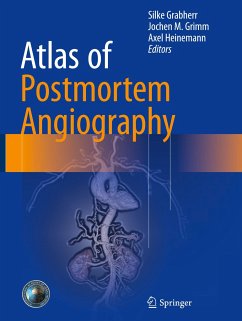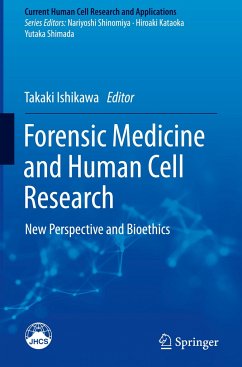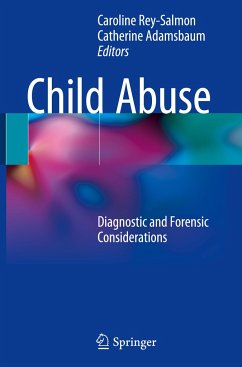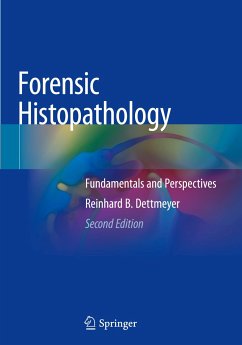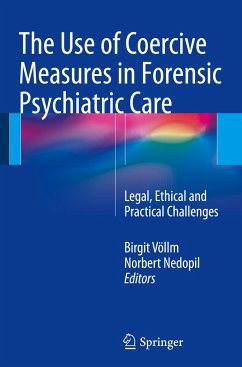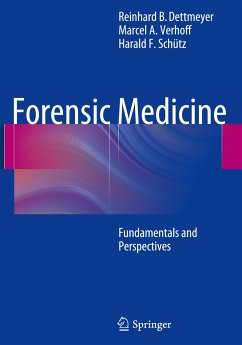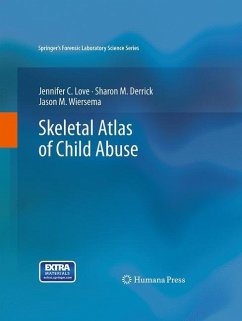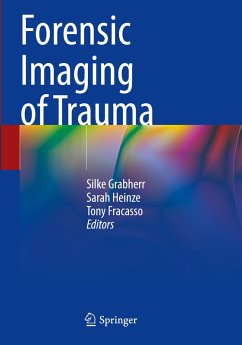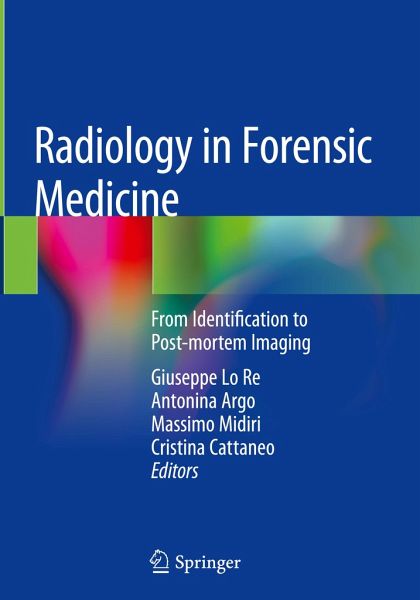
Radiology in Forensic Medicine
From Identification to Post-mortem Imaging
Herausgegeben: Lo Re, Giuseppe; Argo, Antonina; Midiri, Massimo; Cattaneo, Cristina

PAYBACK Punkte
46 °P sammeln!
This book offers a comprehensive overview of the forensic and radiological aspects of pathological findings, focusing on the most relevant medico-legal issues, such as virtual autopsy (virtopsy), anthropometric identification, post-mortem decomposition features and the latest radiological applications used in forensic investigations. Forensic medicine and radiology are becoming increasingly relevant in the international medical and legal field as they offer essential techniques for determining cause of death and for anthropometric identification. This is highly topical in light of public safet...
This book offers a comprehensive overview of the forensic and radiological aspects of pathological findings, focusing on the most relevant medico-legal issues, such as virtual autopsy (virtopsy), anthropometric identification, post-mortem decomposition features and the latest radiological applications used in forensic investigations. Forensic medicine and radiology are becoming increasingly relevant in the international medical and legal field as they offer essential techniques for determining cause of death and for anthropometric identification. This is highly topical in light of public safety and economic concerns arising as a result of mass migration and international tensions.
The book discusses the latest technologies applied in the forensic field, in particular computed tomography and magnetic resonance, which are continuously being updated. Radiological techniques are fundamental in rapidly providing a full description of the damage inflicted to add towitnessand medical testimonies, and forensic/radiological anthropology supplies valuable evidence in cases of violence and abuse.
Written by international experts, it is of interest to students and residents in forensic medicine and radiology. It also presents a new approach to forensic investigation for lawyers and police special corps as well as law enforcement agencies.
The book discusses the latest technologies applied in the forensic field, in particular computed tomography and magnetic resonance, which are continuously being updated. Radiological techniques are fundamental in rapidly providing a full description of the damage inflicted to add towitnessand medical testimonies, and forensic/radiological anthropology supplies valuable evidence in cases of violence and abuse.
Written by international experts, it is of interest to students and residents in forensic medicine and radiology. It also presents a new approach to forensic investigation for lawyers and police special corps as well as law enforcement agencies.



